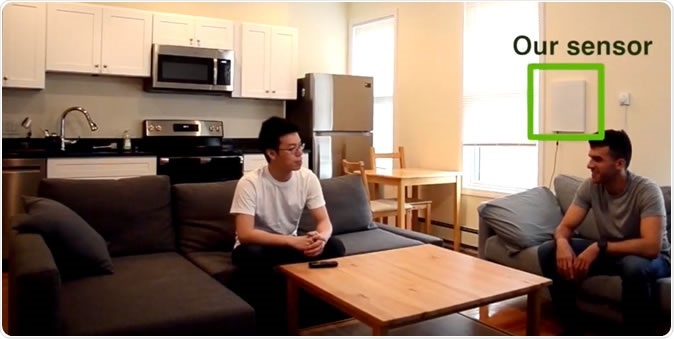Massachusetts' Institute of Technology (MIT) at its Computer Science and Artificial Intelligence Laboratory (CSAIL) has developed a device that can monitor patients with the highly infective COVID-19 remotely and thus prevent the spread of the infection to healthcare workers.
COVID-19
The COVID-19 pandemic has spread to nearly all countries across the world, and the high rate of infection from the virus causing it called the severe acute respiratory syndrome coronavirus 2 (SARS-CoV-2) has made treatment difficult. Patients diagnosed with the condition need to be strictly isolated to prevent further spread. Healthcare workers coming in close contact with such patients are often at a greater risk of acquiring the infection. There are preliminary studies that reveal that the high viral load from the infected patients could be dangerous to the healthcare workers coming in contact with the. MIT's solution would allow healthcare workers to monitor infected patients from a safe distance.
What is the device?
CSAIL's new device, called the Emerald, can not only measure the vital parameters of the patient, such as breathing but also record the sleep patterns and transmit it to the treating healthcare professionals via wireless signals.
The Emerald was developed by a team led by MIT professor Dina Katabi. It contains a WiFi-like box that measures wireless signals that are picked up by artificial intelligence. The AI-enabled device can measure movements, sleep patterns, and vital signs of the patient. What is unique about the device is that it radiates about a thousand times less radiation than from a mobile phone, explain the researchers.

Emerald. Image Credit: MIT
Trial
Emerald is being trialed in different hospitals and assisted-care homes. One such is the Heritage Assisted Living in the Boston suburb of Framingham. After the patient consented to be part of the trial with the device, it was installed in her room. AI and Dr. Ipsit Vahia are monitoring the vital signs and other parameters of the patient from the safety of another room or even location. Parameters such as movement, walking speed, breathing patterns can also be recorded.
Researchers found that Emerald had recorded that the patient's breathing rate had reduced from 23 per minute at baseline to 18 per minute, and with time her sleep patterns normalized. She was able to walk at a faster rate within her apartment rooms. Her recovery process could be tracked.
Non-contact health monitoring for COVID-19
Vahia, an assistant professor of psychiatry at Harvard Medical School, said in a statement, "When doctors have to interact directly with patients to conduct exams or monitor vital signs, each step along the way represents an increased risk that they will get infected. Given how Emerald can generate important health data without any patient contact, it could minimize the risk that doctors and nurses will catch the disease from their patients."
Vahia went on to add that the anxiety caused by the disease often affects heart rate and other parameters and also influences sleep. Many of the patients complain of insomnia, he said. Emerald use in this patient could successfully reveal the presence of sleep apnea in the patient, which could be confirmed by later testing.
William McGrory, who oversees mental health services for Heritage Assisted Living said, "It's clear that, with these high-risk elderly patients, they would greatly benefit from us being able to passively gather medical data over time when it is not possible to interface with each person directly." He said that Heritage is conducting a pilot project using Emerald for the assessment of other conditions such as dementia.
Katabi and colleagues have been working with other hospitals and pharmaceutical companies as well in the development of health monitoring remotely. COVID-19, she said is a challenging situation, especially in retirement homes, nursing homes, and assisted living facilities where there are mostly elderly populations with other diseases that are more at risk of getting infected with COVID-19 and also dying of it.
Katabi says devices like Emerald can not only reduce the contact and risk of infection but also expand the healthcare capacity by allowing more patients to be monitored at once. This can also help healthcare workers triage less severe patients and monitor them within their own homes rather than overwhelming the hospitals and healthcare systems, which could be reserved for only severe cases.
Implications for future
According to Vahia, the director of McLean Hospital's Technology and Aging Laboratory, that develops technologies for elderly care, the COVID-19 pandemic has caused the exploration of several new medical technologies to help large number of patients and providing care to as many as possible with limited resources. He said, "Even in just the last few weeks, there's been a newfound urgency about developing remote-sensing technologies like Emerald that can help doctors do their jobs as safely as possible."
A new way to monitor vital signs (that can see through walls) | Dina Katabi